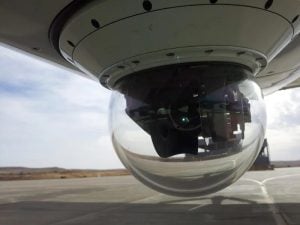Introduction
Physics is the cornerstone of understanding the natural world, and among its most fascinating topics is the study of Waves and Sound. Today’s class, part of our NDA and CDS 2025 Physics preparation, focused on this crucial chapter. Grasping the nature and behavior of waves is not only essential for scoring well in the exam but also for building a strong conceptual base in science and defense technology. Here’s a quick recap of the key points discussed in class.
The Importance of Waves
Waves are everywhere — from sound waves that allow us to communicate, to electromagnetic waves that enable technologies like radio, radar, and mobile communication. Understanding waves helps students appreciate the underlying mechanisms of both nature and modern engineering.
Types of Waves
We started with the classification of waves based on two criteria:
- Based on Medium Requirement:
- Mechanical Waves – Require a medium (e.g., sound waves, water waves).
- Electromagnetic Waves – Do not require a medium and can travel in a vacuum (e.g., light, radio waves).
- Based on Motion of Particles:
- Transverse Waves – Particles move perpendicular to wave direction (e.g., light waves).
- Longitudinal Waves – Particles move parallel to wave direction (e.g., sound waves).
Key Terminologies Explained
To build a strong foundation, we discussed some essential terms:
- Amplitude: The maximum displacement from the mean position. It determines the loudness in sound waves.
- Frequency: The number of wave cycles per second, measured in Hertz (Hz).
- Wavelength (λ): The distance between two successive crests or troughs.
- Pitch: Relates to frequency — higher pitch means higher frequency.
- Velocity (v): Speed at which the wave travels, given by the equation v = fλ.
Speed of Sound: Factors Affecting It
The speed of sound is influenced by:
- Medium: Sound travels fastest in solids, slower in liquids, and slowest in gases.
- Temperature: Higher temperature increases the speed of sound in a medium.
- Humidity (in air): Moist air conducts sound faster than dry air.
- Pressure and Density: For gases, under constant temperature, pressure has negligible effect if the medium remains the same.
Beats: An Interesting Phenomenon
We also explored the concept of Beats, which occur when two sound waves of slightly different frequencies interfere. The resulting sound alternates between loud and soft — a concept useful in musical instrument tuning and wave analysis.
Formula:
Beat Frequency = |f₁ – f₂|
Electromagnetic Radiation
To wrap up, we delved into the electromagnetic spectrum — a range of all types of EM waves, from low-frequency radio waves to high-frequency gamma rays. Understanding EM radiation is vital, especially for NDA and CDS aspirants, as it plays a critical role in military technology, communication, and defense systems.
Conclusion
Today’s session on Waves and Sound has laid a critical foundation for your success in NDA and CDS 2025 Physics. Mastering these concepts not only aids in competitive exams but also builds the analytical thinking needed in armed forces roles. As we continue our journey through the curriculum, remember: conceptual clarity and consistent revision are key to success.

















